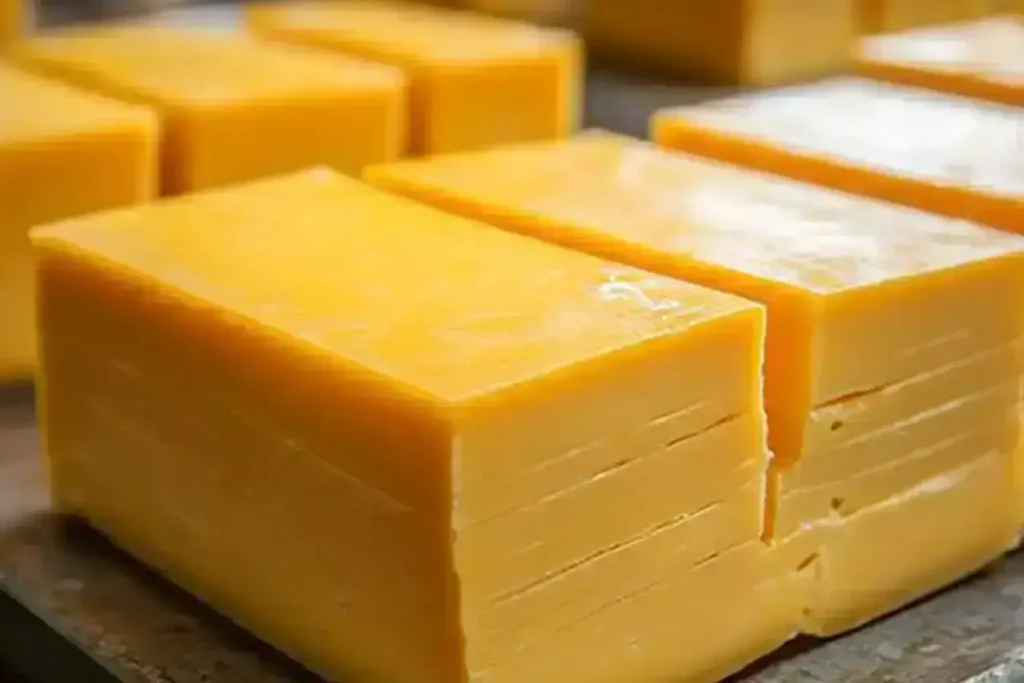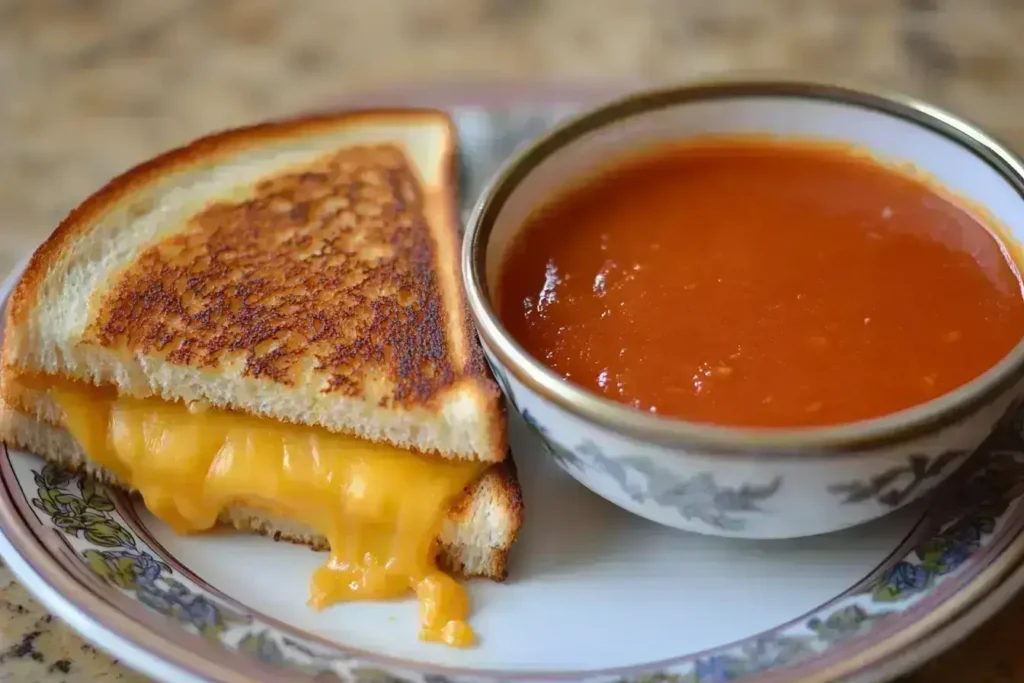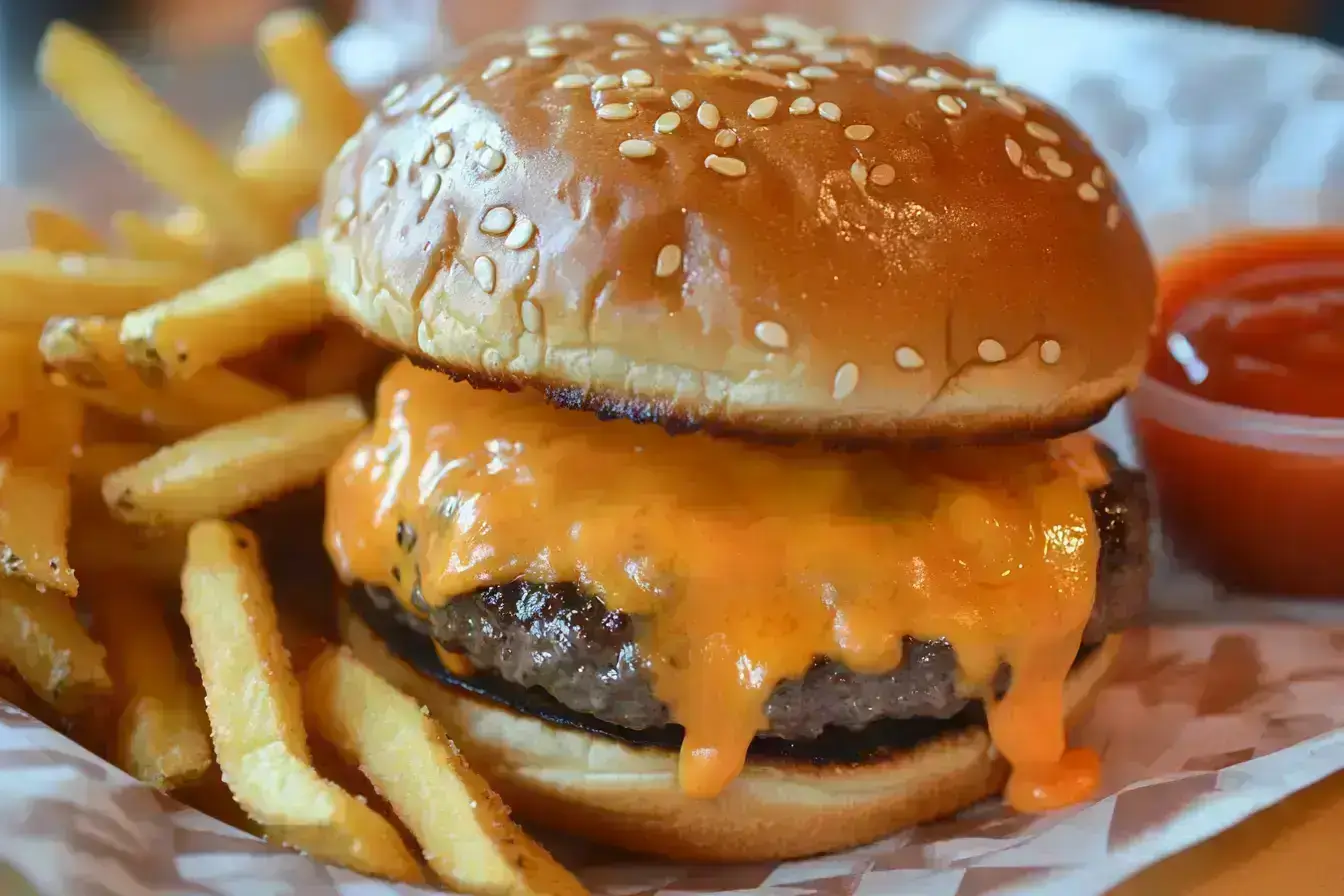Cheese is a universal favorite, but when it comes to American cheese, many people ask, “Is American cheese technically cheese?” This question sparks debates among food enthusiasts because American cheese doesn’t follow the traditional cheese-making process. Let’s uncover the truth about this iconic food and explore whether it deserves to be called cheese.
What Defines Cheese?
To determine “Is American cheese technically cheese?”, we must first understand what defines cheese. Traditional cheese-making involves curdling milk with natural bacteria and enzymes, then aging it to develop flavor. American cheese deviates from this process by incorporating emulsifiers and preservatives, which shifts it into the realm of processed foods.
The Traditional Cheese-Making Process
Artisans have crafted cheese for centuries using a simple process that involves milk, bacteria cultures, rennet, and salt. They curdle milk into solids (curds) and liquids (whey), then press and age the curds to create a variety of cheeses.
Natural cheese relies on simplicity—minimal ingredients and a natural aging process. Think of cheddar, gouda, or brie.
Legal Definitions of Cheese
Governments set strict standards for what qualifies as cheese. For example, the U.S. Food and Drug Administration (FDA) requires that cheese must contain a minimum percentage of milk solids and fats without relying on excessive additives.
What Is American Cheese?
Now that we understand traditional cheese, let’s zoom in on American cheese. Spoiler: it doesn’t follow the same process as a block of cheddar.
History of American Cheese
James L. Kraft revolutionized cheese production in the early 20th century by creating American cheese. He developed a method to improve shelf life and melting properties by blending natural cheese with emulsifiers and stabilizers. His invention quickly became popular, paving the way for the iconic slices we know today.
Ingredients in American Cheese
American cheese combines natural cheese, milk, whey, protein concentrates, emulsifiers, and food colorings. This mix creates its unmistakable smooth texture and bright color.
The Process of Making American Cheese

Instead of aging like traditional cheese, American cheese undergoes pasteurization. Manufacturers melt natural cheese, mix it with emulsifying salts, and reform it into slices, blocks, or spreads. This process ensures consistency but means it isn’t entirely natural cheese.
Is American Cheese Really Cheese?
The million-dollar question remains: does American cheese count as “real cheese”?
The Debate: Processed Cheese vs. Real Cheese
One of the most discussed topics in food science is: “Is American cheese technically cheese?” Technically speaking, American cheese falls under the category of “processed cheese.” It starts with natural cheese but undergoes a process that changes its classification.
FDA Standards and Labeling
The FDA doesn’t allow companies to label American cheese as “cheese.” Instead, they require terms like “pasteurized process cheese” or “cheese food.” These labels inform consumers about its processed nature.
Consumer Perceptions and Misconceptions
Despite its popularity, consumers often wonder, “Is American cheese technically cheese?” Marketing labels and terms like “cheese product” contribute to confusion.
Adding a Table: Nutrition Facts
Here’s a breakdown of the nutritional content of a typical slice of American cheese:
| Nutrient | Quantity |
|---|---|
| Calories | 70 |
| Total Fat | 5 g |
| Saturated Fat | 3 g |
| Sodium | 250 mg |
| Protein | 4 g |
| Calcium | 10% DV |
Note: Values may vary depending on the brand.
Block Quote
“American cheese isn’t just food; it’s an experience. Its melting magic and creamy texture make it a staple in the modern kitchen—even if it isn’t ‘real’ cheese.”
Common Problems and Misunderstandings About American Cheese
American cheese often finds itself in the center of debates, with critics questioning its authenticity and nutritional value. Let’s uncover some of the most common problems and misunderstandings associated with this iconic food.
Mislabeling and Marketing Tactics
One of the biggest issues surrounding American cheese lies in its labeling. Brands often use terms like “cheese food” or “cheese product” instead of “cheese,” which confuses consumers. Many assume that these labels mean the product is less authentic.
To make things clearer, the FDA has implemented rules to distinguish between natural and processed cheeses. These guidelines ensure transparency, but the confusion remains due to the marketing tactics some companies use to promote American cheese as a wholesome, traditional product.
Concerns About Additives and Preservatives
Critics often highlight the additives and preservatives in American cheese. Unlike natural cheeses, which age naturally, American cheese relies on emulsifying salts to achieve its smooth texture and long shelf life.
Here’s a closer look at common additives:
- Emulsifiers: Help blend oil and water, creating the signature creamy consistency.
- Preservatives: Extend shelf life, making it a convenient option for busy households.
- Coloring Agents: Provide the classic orange hue, though many brands now offer natural alternatives.
While these ingredients may sound intimidating, they are FDA-approved and safe for consumption in regulated quantities.
Nutritional Controversies
Some health-conscious consumers avoid American cheese because of its reputation for being overly processed. While it does contain sodium and saturated fats, it also offers protein and calcium. Comparing it to natural cheese reveals a trade-off between convenience and nutrition.
Nutrition Comparison (Per Slice):
| Nutrient | American Cheese | Cheddar Cheese |
|---|---|---|
| Calories | 70 | 113 |
| Total Fat | 5 g | 9 g |
| Sodium | 250 mg | 174 mg |
| Protein | 4 g | 7 g |
| Calcium | 10% DV | 20% DV |
American cheese provides lower calories and fat but contains more sodium than cheddar. It’s a practical option in moderation.
Advantages of American Cheese
Despite the criticisms, American cheese holds its own as a beloved kitchen staple. Its unique properties make it a favorite in various culinary applications.
Versatility in Cooking
One of American cheese’s greatest strengths is its versatility. It melts like a dream, creating silky, gooey textures that enhance dishes like mac and cheese, cheeseburgers, and nachos. Unlike natural cheeses, which can sometimes separate or clump, American cheese delivers consistent results.
For instance, when you melt a slice of American cheese over a patty, it coats the meat evenly without losing its creamy texture. This reliable melting quality makes it a go-to choice for chefs and home cooks alike.
Shelf Life and Convenience
Natural cheeses often require careful storage and may spoil quickly. In contrast, American cheese offers a long shelf life, making it a practical choice for households that want a reliable option on hand. Packaged slices also provide portion control and reduce waste.
Affordability and Accessibility
American cheese is one of the most affordable cheese options on the market. Its low cost makes it accessible to a wide range of consumers, providing a budget-friendly way to enjoy cheesy goodness in everyday meals.
How to Use American Cheese in Everyday Meals

American cheese shines when incorporated into recipes. Its adaptability and consistency allow it to elevate a variety of dishes.
Popular Recipes Featuring American Cheese
- Grilled Cheese Sandwiches: Layer slices between bread and grill to perfection for a crispy, melty snack.
- Cheeseburgers: Add a slice on top of a hot burger patty for the ultimate indulgence.
- Mac and Cheese: Use American cheese for a creamy, kid-friendly twist on this classic comfort food.
Tips for Pairing American Cheese
While it’s not as sophisticated as aged cheeses, American cheese pairs surprisingly well with simple ingredients. For a quick snack, serve it with crackers, pickles, or apple slices. Its mild flavor complements both sweet and savory elements.
Innovative Ways to Enjoy American Cheese
Feeling creative? Try using American cheese in unconventional ways:
- Cheese Sauce: Melt it with milk and seasonings for an easy dip.
- Breakfast Burritos: Wrap it with scrambled eggs and sausage for a hearty start to your day.
- Stuffed Peppers: Layer it inside peppers for a cheesy surprise.
Block Quote
“American cheese might not win awards for tradition, but its versatility and reliability have earned it a permanent spot in kitchens around the world.”
Addressing Common Concerns
American cheese has sparked numerous debates over the years, ranging from health concerns to sustainability. Let’s tackle some of these issues head-on to better understand its place in our diets and society.
Allergies and Dietary Restrictions
For individuals with specific dietary restrictions, American cheese can either be a helpful option or a potential hazard.
- Lactose Intolerance: Many processed cheeses contain lower levels of lactose compared to natural cheese, making them more tolerable for those with mild lactose sensitivity.
- Gluten-Free Diets: American cheese is typically gluten-free, but always check the label to confirm.
- Vegetarian Concerns: Not all American cheeses use animal-derived rennet, but it’s important to read the ingredients list if this is a concern.
These factors make American cheese a practical choice for some, but understanding its composition is key for safe consumption.
Sustainability and Ethical Considerations
Sustainability has become an important consideration for modern consumers. Critics argue that the production of processed foods, including American cheese, contributes to a larger environmental footprint. The manufacturing process often relies on large-scale dairy farming, which raises concerns about animal welfare and greenhouse gas emissions.
On the other hand, its long shelf life and minimal food waste compared to perishable natural cheeses provide some environmental benefits. Choosing brands that prioritize ethical sourcing and sustainable practices can help address these concerns.
Nutritional Facts About American Cheese
A detailed understanding of its nutritional content can help consumers make informed choices about including American cheese in their meals.
Comparing American Cheese to Natural Cheeses
As previously discussed, American cheese tends to have fewer calories and fats than natural cheeses like cheddar. However, its sodium content is notably higher. For individuals watching their sodium intake, moderation is essential.
Key Nutritional Components
Here’s a more detailed look at what makes up American cheese:
| Component | Per Slice (21g) |
|---|---|
| Total Calories | 70 |
| Total Fat | 5g |
| Saturated Fat | 3g |
| Cholesterol | 15mg |
| Sodium | 250mg |
| Protein | 4g |
| Calcium | 140mg (10% DV) |
Frequently Asked Questions About American Cheese
What is American cheese made of?
American cheese contains a blend of natural cheese, milk, whey, protein concentrates, emulsifiers, and sometimes food colorings. This combination creates its creamy texture, smooth melt, and iconic orange color.
Is American cheese considered real cheese?
Not exactly. While it contains natural cheese as a base ingredient, the addition of emulsifiers and stabilizers changes its classification to “processed cheese” or “cheese product.” The FDA does not allow it to be labeled simply as “cheese.”
Does American cheese have nutritional benefits?
Yes, American cheese provides protein, calcium, and energy in small portions. However, it also contains higher sodium and additives than natural cheeses, so consuming it in moderation is key.
Is American cheese gluten-free?
Most American cheese varieties are gluten-free, but always check the packaging for assurance. Certain brands may include additives or flavorings that contain gluten.
Can lactose-intolerant individuals eat American cheese?
Some lactose-intolerant individuals can tolerate American cheese due to its low lactose content compared to natural cheeses. However, sensitivity levels vary, so it’s best to try small amounts first.
Why is American cheese orange?
The bright orange color comes from food colorings, such as annatto or artificial dyes. These additives are safe for consumption and help create the signature look of American cheese.
Does American cheese melt better than natural cheese?
Yes! American cheese melts more smoothly than natural cheeses due to its emulsifiers, which prevent separation during heating. This makes it a favorite for grilled cheese sandwiches and cheeseburgers.
How should I store American cheese?
Keep American cheese refrigerated and sealed tightly to maintain freshness. Its long shelf life makes it a convenient choice for everyday use.
What are the common concerns about American cheese?
Some concerns include its processed nature, high sodium content, and the use of additives. While these factors make it less “natural,” they also enhance its shelf life and melting properties.
Conclusion: Is American Cheese Worth It?
American cheese may not meet the strictest definitions of cheese, but it undeniably holds a unique place in our kitchens. Its versatility, affordability, and convenience make it a popular choice for quick meals and comfort food.
However, it’s important to consume it in moderation, especially if you’re mindful of sodium and additives in your diet. By understanding its composition and benefits, you can decide whether it deserves a spot in your fridge.

